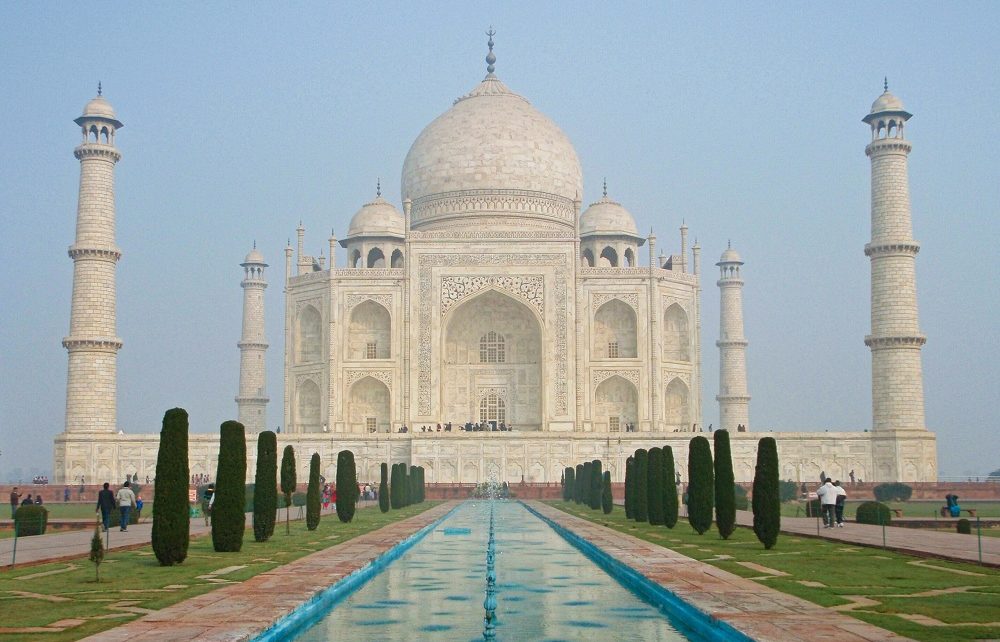The crenellated sandstone walls rising up behind the wide moat were supposed to be impregnable but no one ever dreamed of an assault such as this. The arrow slits and murder holes that once spelled doom for invading soldiers now assist the progress of the advancing scourge. The ornate gates, built to withstand the onslaught of siege elephants merely provide more handholds for these nimble fingers as they scale the walls in seconds. We thought we'd be safe inside the fortified walls of Agra Fort. Alas, nothing in Agra seems to be monkey proof.

Agra Fort
Agra was once the capital of the Mughal Empire. Although we, like everyone else, were there to see the Taj Mahal, we were also very impressed with Agra Fort. Earlier Mughal emperors favoured the local red sandstone for their impressive structures but Emperor Shah Jahan preferred marble. He kept the external sandstone fortifications at Agra Fort but revamped the interior and built elaborate marble palaces and pavilions.
One of the more impressive examples of Shah Jahan's taste is the Musamman Burj. Although it was originally built for his wife, Shah Jahan himself was later imprisoned here by his son. Every inch of the columns, arches and walls are covered with red, green and gold floral designs. There is even a decorative fountain in the centre of the main room. From the upper level, we had a clear view along the Yamuna river. It's easy to understand why Shah Jahan cherished this view. In the distance, the white marble of India's most famous landmark shimmers like a mirage against Agra's dusty red horizon.

Taj Mahal
Commissioned as a tomb for his late wife, the Taj Mahal is the masterpiece of Shah Jahan's rule. The towering doorways of the main mausoleum made us feel extremely small. Floral motifs, inlaid with semi precious stones, added flashes of colour as they twisted and turned around the edges of the wide, vaulted arches. A great white dome crowns this ornate tomb with four minarets standing sentinel around it.
The architect was clearly a perfectionist, paying great attention to detail. Each of the four sides of the main building is identical making the whole structure perfectly symmetrical. The principles of symmetry are apparent throughout the complex from the tiling on the floor to the positioning of the various pavilions and gatehouses. The mosque standing to the west of the mausoleum would have offered mourners a place to pray like all traditional Islamic burial grounds. The building on the opposite side is the mirror image of the mosque. It could never be used for worship as it faces away from Mecca so it was probably added to keep the symmetry.
Perspective was also a major consideration in the design of the Taj Mahal. The minarets and walls lean slightly outwards so they appear perfectly straight to someone peering up at them. In addition, the Arabic calligraphy adorning the walls gets gradually larger higher up so it all appears the same size from ground level.
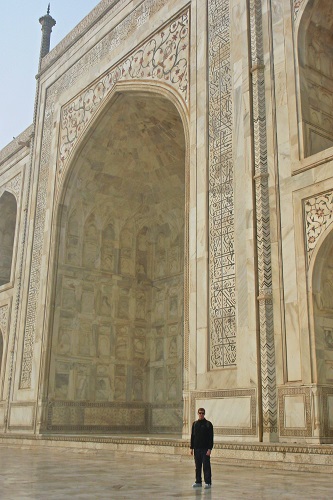
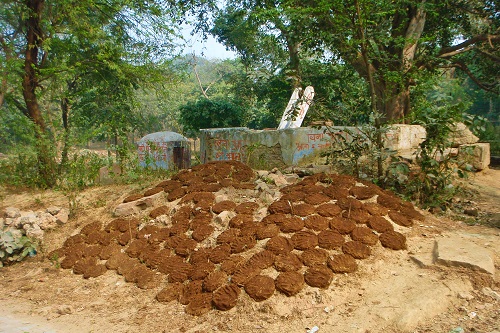
Animals In Agra
We discovered motor vehicles have been banned near the Taj Mahal in order to reduce pollution. Instead, carriages pulled by horses or camels were ready to ferry tourists the last few hundred metres to the entrance. These animals all wear nappies, which serve a dual purpose. As well as keeping the streets cleaner, people dry out the dung and use it as fuel. In several parts of Agra we saw dung pancakes drying in the sun.
Like many places in India, Agra is home to a host of urban wildlife and the macaques that cavort across the rooftops add an extra point of interest. Although they live in relative harmony with the locals, these cheeky monkeys are always ready to pounce. We were surprised to see a whole troupe of monkeys invading our hotel. They crept in through a skylight, upended bins and threw rubbish around. The monkeys soon made a hasty retreat when the staff arrived wielding heavy sticks.
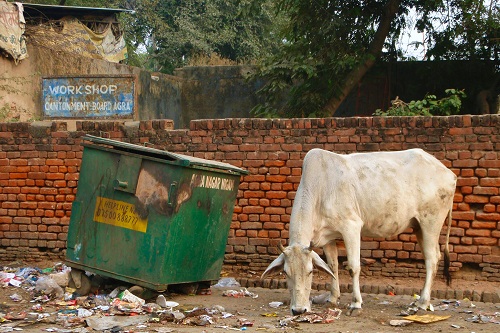
What To Eat In Agra
The food around the Agra area has also been heavily influenced by the Mughals. We loved the characteristic Mughlai curry sauce. It was rich and creamy and usually enhanced with a sprinkling of cashews or raisins. We thought this curry went well with malai kofte, dumplings made from paneer, a fresh Indian cheese.
Visits to the Taj Mahal and Agra Fort can be squeezed into a single exhausting day. However, as with anything in India, things can take longer than you expect so allow some extra time. We also made a day trip to Fatehpur Sikri, Emperor Akbar's imperial capital. This turned out to be one of our favourite places in India.
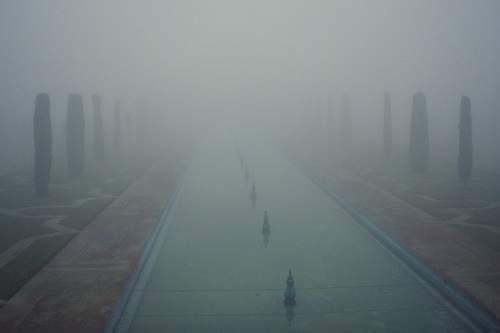
Taj Mahal In The Mist
Agra Travel Tips
The Taj Mahal is usually closed on Fridays. Plan your trip accordingly.
It sometimes takes a few hours for the early morning mist to clear. Despite getting into the Taj Mahal at 7am, we couldn't actually see the iconic view until after 10am. Needless to say we couldn't see the sunrise either.
Foreign tourists pay considerably more to enter the Taj Mahal than Indian visitors. The higher priced ticket includes free use of the toilets. This doesn't stop the toilet attendants trying to charge you but you don't have to pay them.
